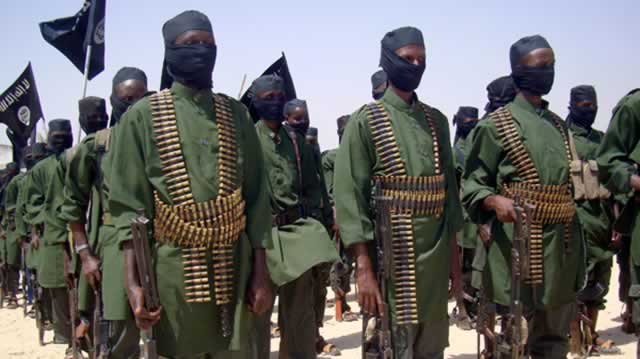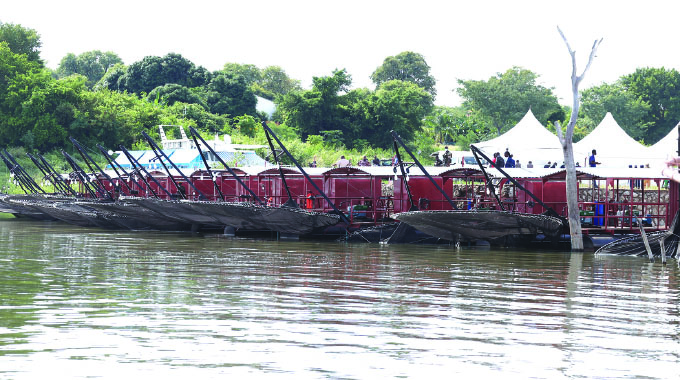How East Africa lost its innocence

Wanjohi Kabukuru NewAfrican
THERE are some dates that are now painfully etched into the subconscious of East Africans. One of them is 11 July 2010. As the FIFA World Cup final was approaching its zenith, a bomb exploded at the clubhouse of the Kyadongo Rugby Club in Kampala, Uganda. Seventy-four people died and more than 60 others were injured. Al-Shabaab, the Somali terrorist group, claimed responsibility for the attack. It was Uganda’s first solemn experience of imported terrorism.
Three years after the Kyadongo attack, on September 21 2013 to be precise, Al-Shabaab struck again. They entered Kenya’s high-end Westgate Shopping Mall, a model symbol of opulence on the outskirts of the Kenyan capital Nairobi, a place frequented by the high and mighty and diplomats and UN staff domiciled in Nairobi, and started a killing spree. A combined contingent of specialised units drawn from the Kenya Defence Forces and the police responded and engaged the terrorists in a firefight. When the military boots left the scene, 67 people from different nationalities had been killed, while hundreds of others were injured.
Kyadongo and Westgate have now passed into Somali-Kenya-Uganda folklore. Both attacks are acknowledged as Al-Shabaab’s retribution for the Ugandan and Kenyan armies’ presence in Somalia. Since 2007 Uganda has taken the lead role in the African Union Mission in Somalia (AMISOM), while Kenya launched “Operation Linda Nchi” (Operation Defend the Nation) into Somalia in October 2011, after a series of terrorist incidents in Kenya were blamed on Al-Shabaab. In 2012, the Kenyan troops engaged in “Operation Linda Nchi” were re-hatted and made part of AMISOM.
Despite the attacks in Kyadongo and Westgate, both the Ugandan and Kenyan armies still remain in Somalia, though the two attacks completely redefined Al-Shabaab, revealing its capabilities for operating through sleepers and tightly-controlled cells outside of Somalia. The attacks also exposed East Africa’s vulnerabilities and demanded a rethink of the region’s security apparatus.
The records show that Kenya and Tanzania first witnessed the horrors of imported terrorism in August 1998 when the US embassies in their major cities – Nairobi and Dar es Salaam – were attacked by simultaneous truck bombings.
Fazul Abdullah Mohammed, a Comorian national who had a Kenyan passport, was said to have been the mastermind of the attacks. Mohammed was alleged to have been Osama Bin Laden’s confidant in East Africa. In all, 213 people were killed in the Nairobi attack, and 11 in Dar es Salaam. Mohammed was reportedly killed in Somalia in 2011. But the current spate of attacks, mostly attributed to Al-Qaeda’s East African affiliate, Al-Shabaab, have led to a highly emotive and disturbing trend that threatens more than a dozen African, Middle East and Far East nations.
Al-Shabaab, which means “The Youth”, was formed by remnants of the former Islamic Courts Union (ICU) of Somalia which seized power after a US-backed and sponsored Transitional Federal Government (TFG) failed to win public approval. In late 2006, however, the ICU announced its intention to make Somalia an Islamic emirate. This did not go down well with its neighbours, especially Kenya and Ethiopia, who have always viewed Somalia with suspicion.
Soon unconfirmed reports hinted that the ICU was giving shelter to Al-Qaeda suspects, and this too did not please the neighbouring countries or the US. An elaborate plan was, therefore, put in place by the US Central Intelligence Agency (CIA), which led to an incursion into Somalia co-ordinated by the Ethiopian National Defence Forces (ENDF). The US was not going to soil its fingers in Somali, again as it did in 1993, which led to its humiliating defeat in October of that year, when it lost 18 soldiers while trying to capture General Mohamed Farah Aideed.
The movie “Black Hawk Down” is a good rendition of that American defeat in Mogadishu. Since then the US has limited itself to proxy wars in Somalia and elsewhere, and this is how Washington ended up supporting the ENDF’s incursion into Somalia with the aim of routing the ICU and freeing Mogadishu of its tentacles.
Thanks to the American support, the Ethiopian invasion was successful and a new Transitional Federal Government was put in place in Mogadishu. But the seeds of terrorism had been sown! It is this US-backed change of government and the Ethiopian brutal occupation that lasted for three years that security analysts say led to the radicalisation of Al-Shabaab from a peripheral player in Somali affairs into a militant organisation capable of waging an insurgency inside and outside Somalia’s borders.
According to Abukar Arman, Somalia’s former special envoy to the US: “Before they joined Al-Qaeda, Al-Shabaab was a small military contingent affiliated with the ICU. Their focus was unmistakably domestic until the CIA path. They no longer go hand in hand. That is the simplified American and CNN take, but the reality is different.”
Indeed, the last decade has been a rough ride for East African security chiefs who operate within strained budgets, and yet are expected to defeat armed militias, dismantle terrorism networks, snuff out religious fundamentalism, and curtail cross-border organised crime.
In fact, Al-Shabaab is not the only headache facing security agencies and threatening the region’s social cohesion, economic gains, and political stability. There are newer groups sprouting all along the East African coast that are equally lethal.
On February 17 2013, Father Evaristus Mushi, a Catholic priest, arrived in his Mtoni parish in Zanzibar. He was shot dead by two gunmen riding on a motorbike. The killing came after the burning of a 500-seater Protestant church in the archipelago and simultaneous bomb attacks on bars by youths protesting the sale of alcohol on the islands. The main suspect in these attacks was the radical Muslim group, Uamsho (Swahili for awakening), whose official name is Association for Islamic Mobilisation and Propagation.
A month later, on election day in Kenya, the Mombasa Republican Council (MRC), while planning to disrupt the general elections, ambushed a police convoy. As many as 14 people, including six police officers, were killed in the ambush.
Uamsho and MRC have two things in common. Both claim affiliation with Al-Qaeda and Al-Shabaab, and are separatist movements. Uamsho’s goal is Zanzibar’s secession from the Union of Tanzania, while the MRC wants the secession of the coastal region from Kenya.
Due to their secessionist demands, Uamsho and MRC are considered to be more political than other groups, but they are mutating fast into radical movements as a result of the high-handed treatment meted to their members by the Tanzanian and Kenyan security forces, and unmet desires.
Dr Wafula Okumu, a security expert and a regional conflict researcher who edited the Institute of Security Studies’ “Militias, Rebels and Islamist Militants” report, says extremism in East Africa is caused by both internal and external factors. “Extremism can be traced to the failure of weak states to manage diversities, tackle national challenges, and govern in ways that deliver public goods to all citizens regardless of their identities.”
According to Okumu, “those marginalised and excluded from benefiting from the public goods seek means of articulating their grievances. And they usually find them from foreign sources such as Al-Qaeda and radical Islamic groups that offer alternatives to their current conditions.
“Usually this is the tipping point as the reaction of the state, mostly strategic or high handedness, either stems the radicalisation or inflames it. Kenya’s foreign relations policy also plays a role as it is tied to the West, and its Somali intervention has been used as [a] justification for terrorist attacks.”
Economic backlash
The damaging effects of terrorism have seen Kenya’s tourist city of Mombasa recording declining tourist arrivals. Facts and figures released by Phyllis Kandie, cabinet secretary in charge of East African affairs, commerce and tourism, show that terror attacks or a perception of them, have undermined the country’s image as a tourist destination.
The effect on the country’s economy is such that the first year of President Uhuru Kenyatta’s Jubilee Coalition government recorded a negligible 0,5 percent economic growth. Okumu says, “the Jubilee government should understand that insecurity is the biggest threat to the attainment of its agenda”.
Zanzibar too has not been spared the economic backlash of extremism. In 2012 tourism revenues earned the isles some UA$170,5 million, but this went down to US$155,6 million in 2013.
According to a 2012 integration study by the World Bank, the East African Community (EAC) region grew faster than all the other economic communities in the world except ASEAN, and each EAC member country more than doubled its GDP. But if terrorist extremism in the region continues, the economic gains of the last few years may be lost.
To help fight extremism, Western intelligence agencies have invested heavily in anti-terrorism efforts in Africa. Since 2002, the US has leased a permanent military base in Somalia’s northern neighbour, Djibouti.
Camp Lemonnier, whose average annual budget is US$238 million, is the home of the Combined Joint Task Force-Horn of Africa, which is the US military’s main anti-terrorism operational base in Africa. Coincidentally, the war on terror and piracy are among the main reasons why Djibouti has earned the moniker “Garrison Country” for hosting various Western military bases and earning substantial revenues from them. Other than Camp Lemonnier, the US military operates two other drone bases in the East African region, at Manda Bay in Kenya and Arba Minch in Ethiopia.
“I hate to say this but, by and large, affected governments have been spending a considerable portion of their budgets on counter-terrorism,” says Abukar Arman. “Uniformly they rely on military solutions. However, this one-size-fits-all global fad has only proven lucrative to some and money draining to others.”
But from whichever country one comes, the uncomfortable fact that still confronts everybody is the Al-Shabaab threat. – NewAfrican.







Comments